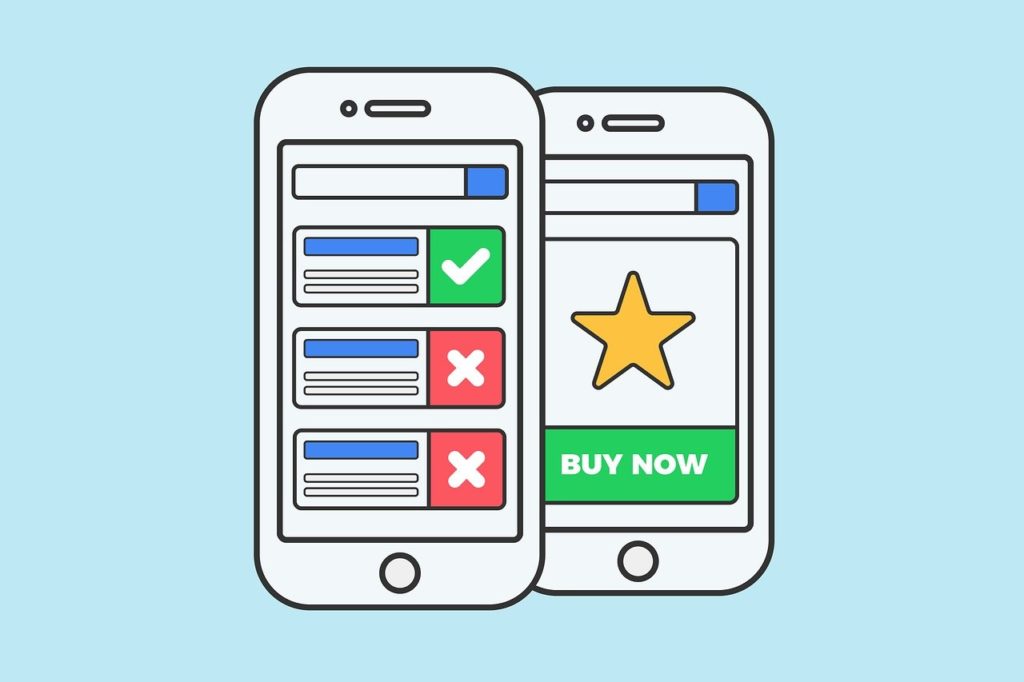This article has been contributed by Michael Davis.
As a small business owner, your website is a huge factor when building an online presence for your brand. It’s one of the best methods to reach customers beyond a traditional brick and mortar store.

Having your small business represented by a high-quality website can be the perfect marketing tool you need to make your brand successful.
In today’s digital world, most consumers search for a brand’s website if they want to learn more about a company or product – if they didn’t discover your business via your website in the first place.
So it’s fair to say that if you want customers, and you want to create revenue, then you need to have a top-notch website. But what exactly does that mean? Read on for the top 7 essential website features for a high-converting small business website.
Building a Website For Your Small Business? Start Here
Whether you want to redesign your existing website or start building a website from scratch, the first step is to create an outline of what information your website needs to contain.
Define Your Target Audience & Customer Journey
Mapping out a customer journey from beginning to end will come in handy. This will enable you to identify what your website needs and how you should design each section.
To facilitate the whole process, you should have a good idea of who your customers are, what they are interested in, and the types of content they will most likely respond to.
Decide Who Will Do Your Web Design
Some business owners make an attempt to design their own websites, which is not a bad idea if you have the technical knowledge to do so. There are numerous programs and web development tools available today that you can use to develop your website.
Alternatively, investing in website design services is also a viable option, especially if you aren’t technically savvy or if you seek a very elaborate website with lots of bells and whistles.
An experienced web designer will be a good investment. If that is the case, be prepared to share your goals and vision for your ideal website with your hired designers.
To facilitate the process, it is recommended to come up with a number of website ideas or wireframes that include information on page layout and formatting to get a head start. This can help your web designer get a better grasp on the type of website that you want.
Plan Your Content
What also can be helpful is providing drafts of the content you want to include on your website, which can be written by you, or you can outsource to a professional content writer to prepare the web copy for you.
The main benefit of having a website in the first place is sharing information about your business and your products to potential customers. You will also have the capacity to educate your current customer base on newly released products and services, special promotions, new business locations, and much more.
7 Features of a Successful Small Business Website in 2022
1. Easy Navigation is Key
Most first-time website visitors expect to find the exact information they are looking for quickly and easily.
Designing a website that grants the consumer access to website information quickly and efficiently increases the chances they will return to gather new information in the future. This means your web visitor had an excellent first impression and liked what they saw on your web pages.
From a consumer’s perspective, they have a goal in mind when navigating a website, such as looking for an item’s price or finding the phone number for customer support.
It is recommended to have a website developed for a seamless and intuitive experience for all your potential customers. If a website seems confusing, with your users having to click and search around everywhere to find the information they need, they may become frustrated and decide to move on.
In short, your website’s navigation tools should be clear, concise, and self-explanatory. They should include page tabs, headings, and relative subtopics.
If your website is bland, unappealing, or difficult to navigate, you set the risk of losing customers to your competitors, which can be costly in the long run.
2. Prioritize Mobile-Friendly Usage
Your small business website also needs to be adapted to mobile platforms. About 96 percent of Americans own a smartphone, and they are using their mobile phones to search web.
Therefore, it’s essential to have a responsive website that is adapted to work on any mobile device for easy access.
Your website should be mobile-optimized to give users a positive navigation experience. This can be achieved by adjusting the size of web pages, trying different menu formats, and including dropdown menus.
You don’t need to design a website all by yourself. If optimizing your website for mobile devices proves to be difficult, hiring a web developer is recommended. A web developer has the skillset to optimize your website in various ways that will help gain more website visitors and higher-quality leads.
3. Have a Consistent Brand Identity
Having a prominent and consistent brand identity online is essential for your brand. This increases the likelihood that potential customers will remember your business and recognize it in different contexts. They’ll be more likely to seek out your products when they’re in the consideration phase of the buying journey if they remember your business.
Consistency is vital in web design. Consumers will have more trust in your brand if your communications have a common thread across your social media channels and website – and even print media if you have any.
On your small business website, you can achieve brand consistency by using your brand’s color palette and similar page themes and typography throughout your entire website. It will help if you have brand identity guidelines to refer to.
Your brand’s tone of voice will also need to be consistent across the whole site. Your brand voice should match your brand personality, for instance fun and playful or elite and exclusive.
4. Include Plenty of Visual Elements
Visual elements such as images and videos play an essential role in web design to attract website visitors’ attention.
Consumers are very often driven by the visual appeal or attractive physical qualities of a product and its benefits. By incorporating eye-catching images and engaging videos of your product or service, your website visitors will be more likely to do business with you.
However, it’s crucial not to go over the top by adding a bunch of images to all your web pages. It’s best to add images and videos where they are going to be the most helpful to the website visitors.
A mix of text and images is very often the norm when it comes to displaying images, and if visual elements are accompanied by descriptive text, it’s even better.
5. Publish Engaging Content
Great content is what distinguishes one website from another. Your website visitors are going to be spending the majority of their time reading your web copy, so it needs to be good.
Website content ought to be written for the sole purpose of providing genuine value to your target audience. In addition, your contents need to reflect your brand, from the topic to the tone. The words on a web page are the active voice of your website.
In addition, when writing content for your small business website, it’s important to make sure that all copy is written concisely and without errors so that your message can be clearly conveyed.
Writing with purpose is the ultimate goal when it comes to writing for any website. After all, a website with little to no written content will be disengaging and lacking its descriptive element.
Words also tell a story, and every business has a story to tell to potential customers. Why should they choose you rather than a competitor? This is where the power of the written word comes into play which has the potential to turn a new lead into a potential new client.
6. Call-To-Actions
A great website wouldn’t be complete without a call-to-action page (CTA) or lead generation form to acquire potential customers.
A CTA is a feature on a web page that can compel a website visitor to take a particular action, such as filling out your contact form, signing up for a newsletter, or be redirected to a blog page. One major benefit of having a CTA on your website is that it has the potential to increase the revenue of your business while also building your customer base.
Defining how you are going to design your CTA is very important, as they are what enable website visitors to turn into potential customers. CTA buttons should be direct, simple, and eye-catching while at the same time, share the same theme as the rest of your website.
It’s always recommended to have several on your website because they can drive profits and generate long-term revenue.
7. Boost Website Loading Speed
There is nothing more detrimental to the user experience (UX) of a website than slow loading speed. In business, time is money, and as a business owner, you need a website that is fast.
A rapidly loading website is a great asset to have both in terms of UX and search engine optimization (SEO). As businesses grow, their websites often become complicated, which can take a toll on performance. Therefore, it’s strongly recommended to maximize the loading speed of each web page so your visitors can navigate throughout your website with ease and efficiency.
There are several factors that affect the loading speed of a web page, such as the file size of images and videos. In this scenario, an experienced web developer will be able to identify sources on each web page that are causing the performance of your website to be affected and offer suggestions to remedy the issues.
Compressing media files and installing website speed plugins are some of the ways to increase web page loading speed.
Page speed is an important part of how your website will rank on web searches. The faster your website loads, the greater the chances it will rank high on Google. By the same token, if a web page takes longer than normal to load, your website visitors will grow impatient and be compelled to seek information on a competitor’s website.
Google PageSpeed Insights is a very effective analytical tool that allows you to assess the loading speed of your current site, and if it ranks below the recommended loading time, your website may be too slow.
_
About the author: Michael Davis is the Content Director of Miami’s On the Map Marketing, Inc. As the chief content editor of one of the fastest-growing internet marketing firms in the country, Michael has made it his mission is to provide high-level, factual, and error-free content that emphasizes the best SEO practices and helps his company’s clients convert sales.




